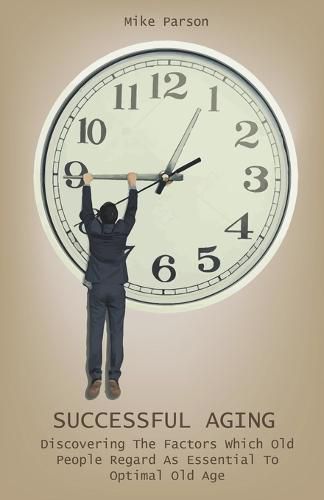Readings Newsletter
Become a Readings Member to make your shopping experience even easier.
Sign in or sign up for free!
You’re not far away from qualifying for FREE standard shipping within Australia
You’ve qualified for FREE standard shipping within Australia
The cart is loading…






This title is printed to order. This book may have been self-published. If so, we cannot guarantee the quality of the content. In the main most books will have gone through the editing process however some may not. We therefore suggest that you be aware of this before ordering this book. If in doubt check either the author or publisher’s details as we are unable to accept any returns unless they are faulty. Please contact us if you have any questions.
The substantial increases in life expectancy at birth achieved over the previous century, combined with medical advances, escalating health and social care costs, and higher expectations for older age, have led to international interest in how to promote a healthier old age and how to age "successfully." Changing patterns of illness in old age, with morbidity being compressed into fewer years and effective interventions to reduce disability and health risks in later life, make the goal of aging successfully more realistic.
Most health care provided in the developed world goes to those aged 65 years or above. The medical model is so dominant that few health professionals are aware of psychosocial aging. The result focuses on the burden of old age, the decline, and the body's failure. This negative perspective inevitably dominates consultations between doctors and patients. However, there is ample evidence that many elderly people regard themselves as happy and well, even in the presence of disease or disability.
$9.00 standard shipping within Australia
FREE standard shipping within Australia for orders over $100.00
Express & International shipping calculated at checkout
This title is printed to order. This book may have been self-published. If so, we cannot guarantee the quality of the content. In the main most books will have gone through the editing process however some may not. We therefore suggest that you be aware of this before ordering this book. If in doubt check either the author or publisher’s details as we are unable to accept any returns unless they are faulty. Please contact us if you have any questions.
The substantial increases in life expectancy at birth achieved over the previous century, combined with medical advances, escalating health and social care costs, and higher expectations for older age, have led to international interest in how to promote a healthier old age and how to age "successfully." Changing patterns of illness in old age, with morbidity being compressed into fewer years and effective interventions to reduce disability and health risks in later life, make the goal of aging successfully more realistic.
Most health care provided in the developed world goes to those aged 65 years or above. The medical model is so dominant that few health professionals are aware of psychosocial aging. The result focuses on the burden of old age, the decline, and the body's failure. This negative perspective inevitably dominates consultations between doctors and patients. However, there is ample evidence that many elderly people regard themselves as happy and well, even in the presence of disease or disability.